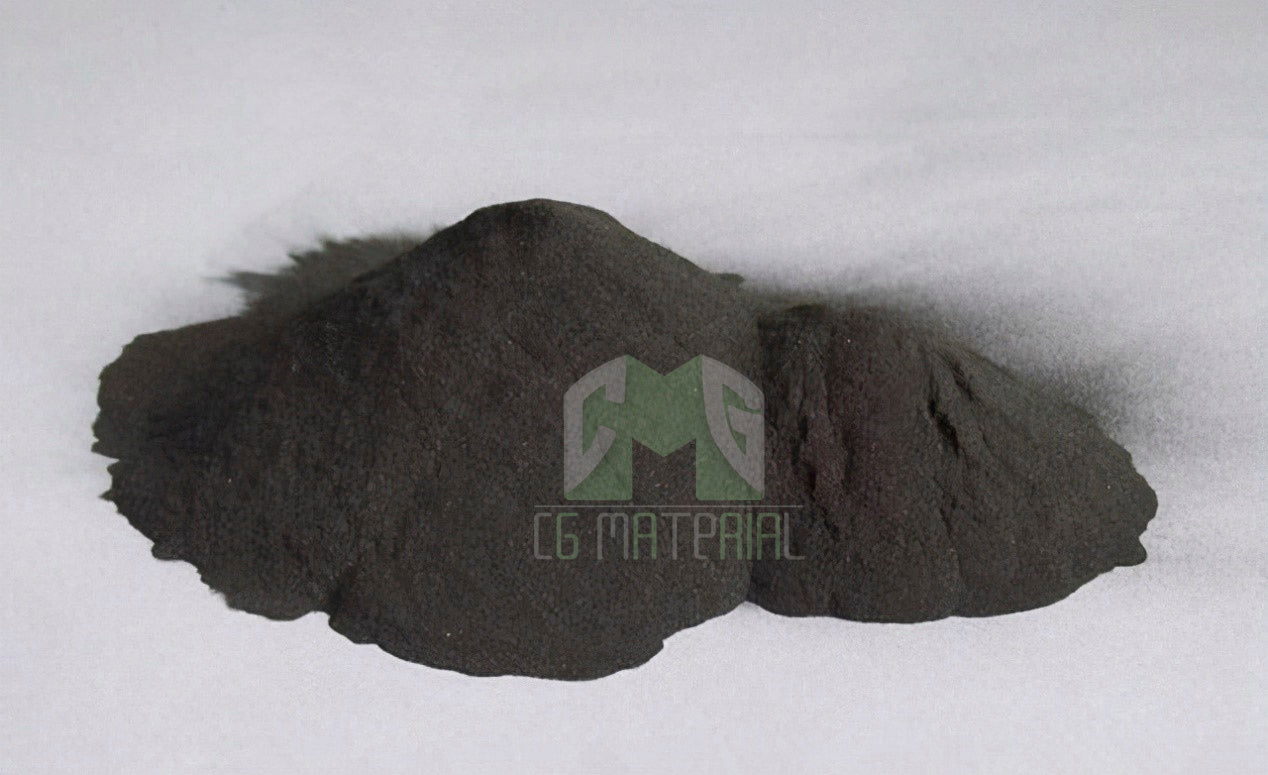CG MATERIAL
Sinter Grade Boron Carbide B4C
Sinter Grade Boron Carbide B4C
Sinter grade boron carbide (B4C) is a high-performance ceramic material used in a variety of industrial and commercial applications. It is a black, crystalline compound that is extremely hard and durable, with a Mohs hardness of 9.3, which is second only to diamond. Sinter grade B4C is made by sintering (i.e., heating and compacting) boron carbide powder at high temperatures and pressures. The resulting material is highly dense and homogeneous, with excellent mechanical and thermal properties.
Sinter grade B4C is commonly used in ballistic armor, as its high hardness and low density make it an ideal material for stopping high-velocity projectiles. It is also used in cutting tools, abrasive applications, and neutron absorption, as it has a high neutron capture cross-section. In addition, sinter grade B4C has good thermal shock resistance, high thermal conductivity, and low thermal expansion, making it suitable for use in high-temperature applications such as furnace components, crucibles, and nozzles.
Boron Carbide Ceramics Specification
| Item No. | Description | Purity | Lot Size |
| CG-CB05-100M | Boron Carbide Powder Particle Size: 100 mesh |
Total B > 78 %, Total C > 19% B2O3 < 0.15%, Free B < 0.3%, Free C < 2.5% |
100 kg 500 kg 1,000 kg Customize |
| CG-CB05-325M | Boron Carbide Powder Particle Size: 325 mesh |
Total B > 78 %, Total C > 19% B2O3 < 0.15%, Free B < 0.3%, Free C < 2.5% |
100 kg 500 kg 1,000 kg Customize |
| CG-CB05-1000 | Boron Carbide Powder Particle Size:1000 Grit |
Total B > 78 %, Total C > 19% B4C > 95% B2O3 < 0.15%, Fe < 0.2% |
100 kg 500 kg 1,000 kg Customize |
| CG-CB05-1200 | Boron Carbide Powder Particle Size:1200 Grit |
Total B > 78 %, Total C > 19% B4C > 95% B2O3 < 0.15%, Fe < 0.2% |
100 kg 500 kg 1,000 kg Customize |
Boron Carbide Ceramic Applications
Boron carbide ceramics are applied widely in industries as wearing resistant materials, and abrasives. As an abrasive, it is used in powdered form in the lapping (fine abrading) of metal and ceramic products, though its low oxidation temperature of 400–500° C (750–930° F) makes it unable to withstand the heat of grinding hardened tool steels.
Because of its hardness, together with its very low density, it has found application as a reinforcing agent for aluminum in military armor and high-performance bicycles, and its wear resistance has caused it to be employed in sandblasting nozzles and pump seals.
Its ability to absorb neutrons without forming long-lived radionuclides makes it attractive as an absorbent for neutron radiation arising in nuclear power plants and from anti-personnel neutron bombs. Nuclear applications of boron carbide include shielding, control rod and shut down pellets. Within control rods, boron carbide is often powdered, to increase its surface area.
Sinter Grade Boron Carbide Specification
| Properties | Units | Value |
| Physical | ||
| Chemical Formula | – | B4C |
| Density, r | g/cm3 | 2.51 |
| Color | – | black or dark gray |
| Crystal Structure | – | hexagonal |
| Water Absorption | % @R.T. | ng |
| Hardness | Vickers @ R.T. (GPa) | 36 |
| Hardness | knoop (kg/mm2) | ng |
| Mechanical | ||
| Compressive Strength | GPa @ R.T. | 2.9 |
| Tensile Strength | MPa@980þC | 155 |
| Modulus of Elasticity | GPa@ R.T | 445 |
| (Young's Mod.) | ||
| Flexural Strength (MOR) | MPa @ R.T. | 375 |
| Poisson's Ratio, u | @R.T. | 0.19 |
| Fracture Toughness, KIc | MPa x m1/2 | ng |
| Thermal | ||
| Max. Use Temperature | ºC | 2450 |
| (* denotes inert atm.) | ||
| Thermal Shock Resistance | DT (ºC) | ng |
| Thermal Conductivity | W/m-K @ R.T. | 28 |
| Coefficient of Linear Thermal Expansion, al | 10-6 K-1 (~25ºC through ±1000ºC) | 5.54 |
| Specific Heat, cp | J kg-1 K-1 @ R.T. | 945 |
| Electrical | ||
| Dielectric Constant | 1MHz @ R.T. | ng |
| Dielectric Strength | kV/mm | ng |
| Electrical Resistivity | Wcm @ R.T. | ng |
Packaging
We handle our products with care to ensure they remain in their original condition during storage and transportation and to preserve their quality.


